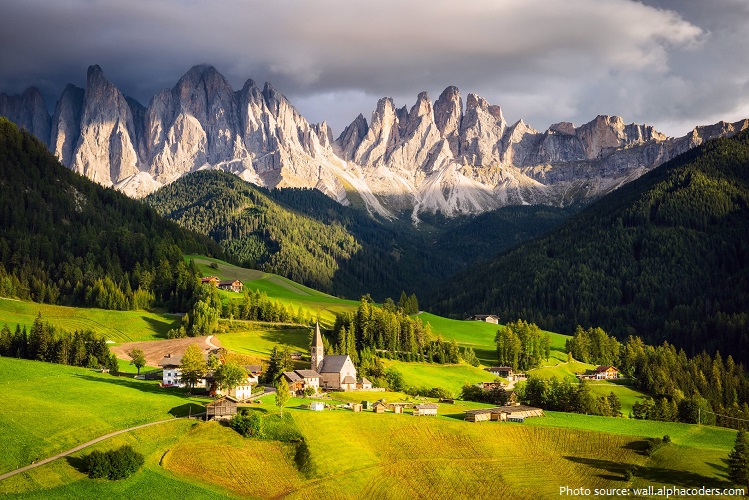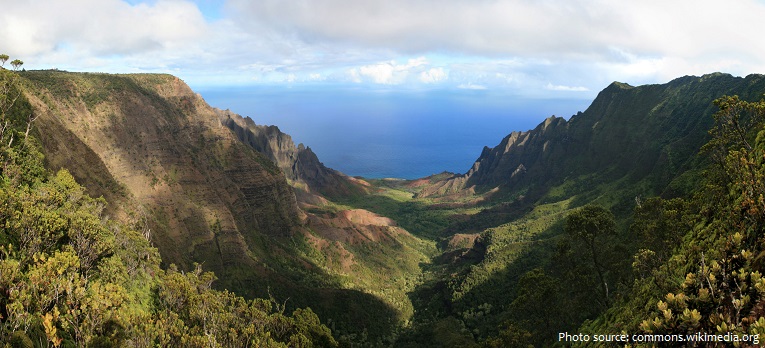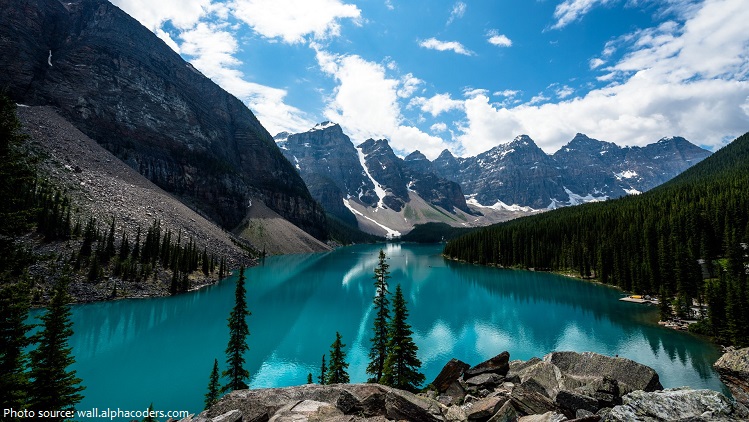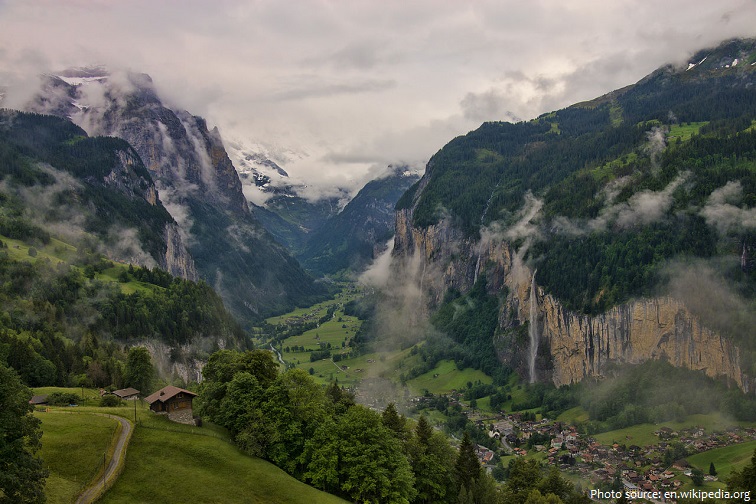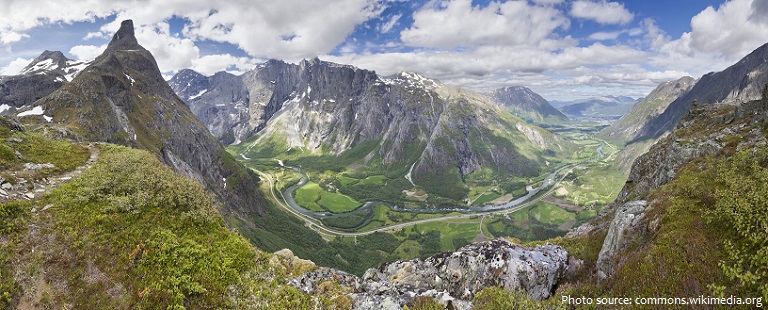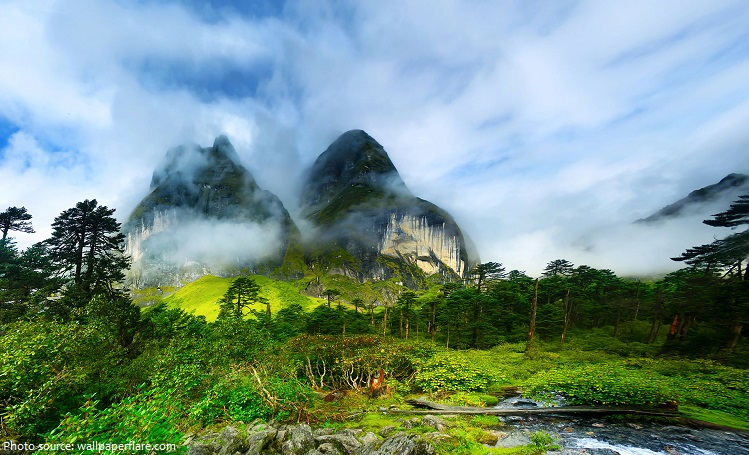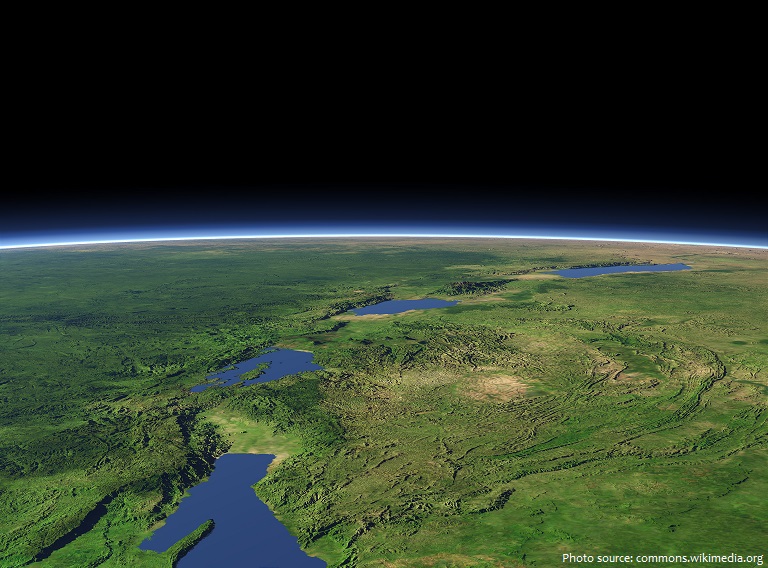A valley is a low area between hills or mountains.
The terms U-shaped and V-shaped are descriptive terms of geography to characterize the form of valleys. Most valleys belong to one of these two main types or a mixture of them, at least with respect to the cross section of the slopes or hillsides.
A V-shaped valley are formed by erosion from a river or stream over time. It is called a V-shaped valley as the shape of the valley is the same as the letter “V”.
U-shaped valleys are formed by the process of glaciation. They are characteristic of mountain glaciation in particular. They have a characteristic U shape, with steep, straight sides and a flat or rounded bottom.
Most valleys belong to one of these two main types or a mixture of them, at least with respect to the cross section of the slopes or hillsides.
Depending on the topography, the rock types and the climate, a variety of transitional forms between V-, U- and plain valleys can form.
There are many famous valleys arond the world.
Yosemite Valley is a glacial valley in Yosemite National Park in the western Sierra Nevada mountains of Central California. The valley is about 12 kilometers (7.5 miles) long and approximately 900-1050 meters (3000–3500 feet) deep, surrounded by high granite summits such as Half Dome and El Capitan, and densely forested with pines. The valley is drained by the Merced River, and a multitude of streams and waterfalls flow into it, including Tenaya, Illilouette, Yosemite and Bridalveil Creeks.
The Kalalau Valley is located on the northwest side of the island of Kauaʻi in the state of Hawaii. The valley is located in the Nā Pali Coast State Park and houses the Kalalau Beach. The valley is surrounded by cliffs more than 610 meters (2,000 feet) high. This valley’s bottom is broad and relatively flat, with an accessible region about 3.2 kilometers (2 miles) long and 0.8 kilometer (0.5 miles) wide. The abundant sun and rain provides an ideal environment for flora and fauna.
Valley of the Ten Peaks is a valley in Banff National Park in Alberta, Canada, which is crowned by ten notable peaks and also includes Moraine Lake. As the name suggests, there are ten snowy mountain peaks adjacent to one another overlooking Moraine Lake, and casting their reflections upon its pristine blue waters.
Lauterbrunnen Valley, deep in the Swiss Alps, is stunning. It is so beautiful and fascinating so much so that, during a hike here in his youth, author J.R.R. Tolkien found inspiration for his Elven kingdom – Rivendell – in The Lord of the Rings. The valley was formed by three receding glaciers and has wooden, alpine chalet inns and 72 waterfalls cascading over the vertical limestone cliff faces. Not to mention the views of snow-capped mountains, being surrounded by the Eiger, Monch and Jungfrau peaks.
Romsdalen is a valley in the western part of Norway. It is one of Norway’s biggest natural attractions. The valley is a 60-kilometre (37-mile) long valley. Romsdalen is home to some of the highest mountains in Norway and many scenic attractions, such as Raumabanen, Trollstigen, Trollveggen and the Romsdalseggen ridge. Several of Norway’s and the world’s tallest waterfalls plunge into the main valley.
Barun Valley is a Himalayan valley situated at the base of Mt. Makalu in the Sankhuwasabha district of Nepal. The valley provides stunning contrasts, where high waterfalls cascade into deep gorges, craggy rocks rise from lush green forests, and colorful flowers bloom beneath white snow peaks. This unique landscape shelters some of the last pristine mountain ecosystems on earth. Rare species of animals and plants flourish in diverse climates and habitats, relatively undisturbed by human kind.
Spanning from Jordan in the Middle East way down to Mozambique in southern Africa, the Great Rift Valley is a colossal geological wonder. It’s a series of connected rift valleys created by the movement of tectonic plates that dates back 30 million years and is 6,000 kilometres (3,700 miles) long. Its volcanism has also produced Mount Kilimanjaro, Mount Kenya, hot springs and deep lakes but most importantly, is gradually splitting the horn of Africa from the continent.
The world deepest vally is the Yarlung Zangbo valley in Tibet. It has an average depth of 5,000 meters (16,400 feet), but explorers in 1994 discovered that its deepest point was 5,382 meters (17,657 feet). The peaks of Namche Barwa (7,753 m, 25,436 ft) and Jala Peri (7,282 m, 23,891 ft) are just 21 km (13 miles) apart with the Yarlung Zangbo River between them, at an elevation of 2,440 m (8,000 ft).

